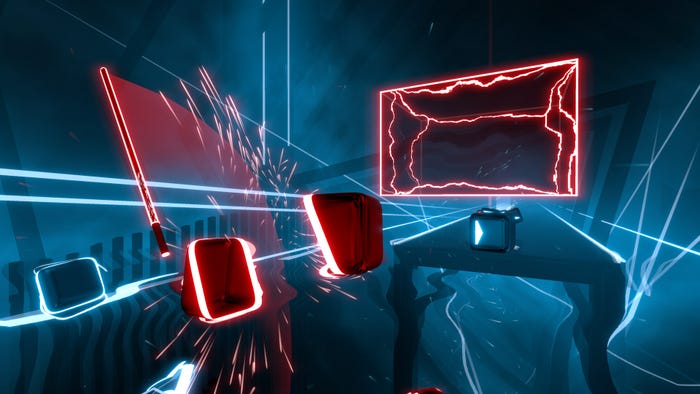5 Best Game Design Software for Mobile Game Designers in 2020
Designing a mobile game experience is not as easy as it sounds. But with the help of the right game development platforms and the expert tool support offered by them, a game designer can excel at delivering the experience that their users would adore.

The number of gamers around the world is increasing. The attempts of entertaining users through games are also evolving with the changing trends of technology. As smartphones have become one of the important aspects of everyone's life, games have found their place in these tiny devices where players can entertain themselves anytime they want.
But for designers, this has raised a huge challenge as the user experience delivered on the mobile apps highly relates to the resolution and screen space. And they have to put up their best efforts to obtain results.
The future of game designers is bright if they know to deal with mobile design issues that contribute to raising issues. But with the use of industry-certified tools that help designers to produce the best results, they can rely on generating the best designs.
5 Reputed Game Design Software that Innovates the Mobile Gaming Experience
According to reports, the gaming industry has scored 120.1 billion U.S. dollar revenue in the year 2019. And the numbers are expected to grow even higher as the year passes. This recommends the use of best design experiences to earn more revenues by making a mobile app that gains popularity among users worldwide.
1. Spine
If you want to create a 2D design for your game, Spine is the answer as it empowers the skeletal design along with game animation. It provides an easier way of animating a character in different situations with a set of single images. The workflow, path, constraints implemented and the tools make a difference when it comes to game designing, and Spine passes all criteria with flying colors.
Once a designer has developed an animated character, he/she can make changes and shift the movements according to the situations easily. If you have to design multiple characters that are look-alike in one or another way, it provides an easier way to create more than one similar character without having to start from scratch.
Spine supports the runtime in most of the programming languages and in every major toolkit. It also includes a complete tutorial section where the user can choose to learn if they are interested in unlocking better benefits of it.
2. Unity
A mobile game designer has to focus on the requirements and choose a game engine that is capable of loading all the resources that relate to the game and deliver an excellent user experience. And Unity ranks as the most popular game engine ever. Unity powers 50% of all games across various devices- mobile phones, tablets, PC, and more, it guarantees to deliver the best results if you trust it enough.
Unity can easily integrate with any design tool and provide helpful resources during virtual graphic design. It has a designer-friendly interface- that allows for better designing and control over the system. Its community keeps the library full of stock photos, images, resources, and more to get designers to fit in the box easily.
It not only helps design a great app, but it also holds the influence of inspiring game designers to do something more and produce the best results. By trying out the support that Unity delivers- a designer can efficiently create apps that impress the players and score more downloads.
3. Proto.io
The next in line is a tool that offers support for designers that belong to the non-technical background. Building a game is made easier with Proto.io as it eliminates the need for hiring a software development company that can design and create your gaming app. Proto provides support for delivering games and game designs without having to struggle much using the templates it provides.
Users can choose to customize these readily available templates and deliver excellent results. However, it asks for thorough planning as a game developed without planning fails to impress users and meet their criteria. To use this particular tool, first, you need to deliver a solid game blueprint and by following it you can design the game efficiently.
It also includes support for Photoshop and Flesh integration that can help in delivering great user experience. Proto.io offers a 15-day free trial for every new user that helps them find out their requirements and ultimately understand the package that fits their needs.
4. Stencyl
If a designer likes to keep it simple and easy, Stencyl is the one he/she should choose. Providing an easy drag and drop 2D interface to create games, it offers excellent game design support. Designers can rely on it to deliver somewhat complex characters but it majorly supports simpler looks and feels.
Without needing to code the design, a game designer can create designs for Android, iOS apps, games for Mac, Windows, and even Flash systems. It offers the engine and many sets of SDKs that help in delivering excellent outputs by controlling the design through code.
But it provides only limited support. For designing virtual reality-based or 3D games, this tool is not at all useful. But to create a simple mobile game that is only aimed for fun and doesn't have any monetization motive behind, it can serve as an efficient platform to start the game designing on the right foot.
5. Overflow.io
Overflow.io emphasizes on making the user flow great to deliver excellent game design services. As the gamers are not always experienced and they want a long tutorial before they become expert at it, some of them are expecting a longer introduction and control guidance.
On another hand, some expert gamers look forward to small matches that they can play anytime and complete without having to waste much time. To deal with these completely opposite situations together, it is vital to prepare an app flow in advance and proceed in the same manner. It helps create user diagrams that can guide you to the right path of developing a game design suiting the user needs.
Moreover, Overflow.io helps in communicating the rough design to other stakeholders. By showing them what each screen aims to provide and how the design will look, you can represent the game design skills onboard. It is not only inclined to use for game designers, but it can also be used by any other stakeholder- the entrepreneur, business personnel, developers, designers, and more can rely on it to create great designs.
Summing Up
Game designing helps produce the best results if the experienced personnel is assigned the task. By learning how users like to play the game and the constraints that each development platform has, a game designer can create intuitive designs that enhance the user experience delivered through games. By learning what fits your users and meets their expectations, you can certainly develop an impressive game that becomes popular across the world and helps earn more revenues.
Read more about:
BlogsAbout the Author(s)
You May Also Like













